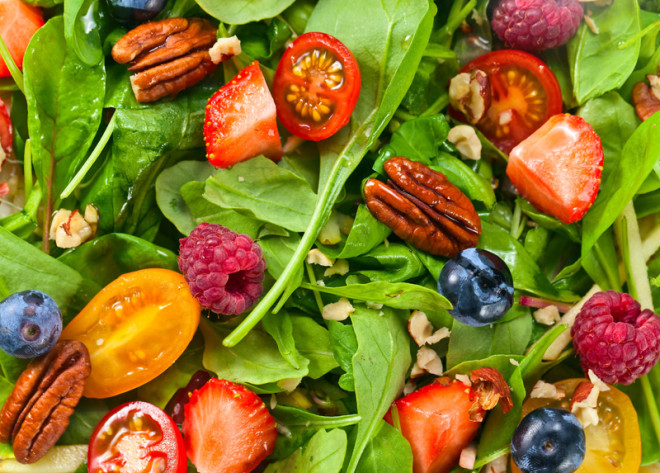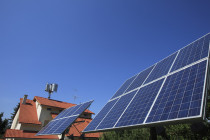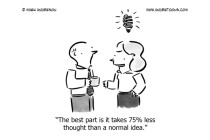Experts predict the future of food production will look vastly different over the next 50 years. According to the UN, the world’s population will have grown by another 2.3 billion over that time and 66% of the population will live in cities. Currently, 80% of agriculture-suitable land is already being used. Researchers are looking at creative options to meet current food production needs and address the implications of changing trends for the future. For example, Philips Lighting is researching optimal LED lighting configurations for city farming centres across the world. Because plants don’t actually use the entire spectrum of sunlight, LED has an important advantage. Photosynthesis generally uses red and blue light, which can be achieved via customizable, energy-efficient LED bulbs. Using LEDs, these city farms produce nutritious produce from leafy vegetables and herbs, to vegetables, wheat, and potatoes. The plan, according to Gus van der Feltz, Philips Global Director of City Farming, is “to develop the technology that makes it possible to grow tasty, healthy and sustainable food virtually anywhere. The research we are undertaking will enable local food production on a global scale, reducing waste, limiting food miles and using practically no land or water.” To this end, research is being cobluenducted at the newly opened GrowWise City Farming research centre at the High Tech Campus in Eindhoven, the Netherlands.
The research centre is completely sealed to natural light, with plants arranged along four-layered mechanized planting racks in eight climate rooms for a total growing surface of 234 m2. Each layer uses blue, red and far-red Philips GreenPower LEDs that are specifically designed for growing and can be configured for different growing conditions. High energy efficiency and low heat production means LEDs can be placed closer to plants and optimally positioned to ensure the best possible illumination. The result, according to Philips, is “better tasting products, grown in a more sustainable way and without the need for pesticides.” Researchers are confident that city farming will alleviate pressure on the world’s food supply while delivering quality products to a population that is increasingly concerned with the sustainability of food production. Building farms within urban centres means less travel time (and associated environmental impact such as consumption of fossil fuels by transport vehicles) for food, which means more locally-produced, fresh food is hitting the table all year round. It made perfect sense to the folks at Green Sense Farms in Portage, Indiana, which provides its coveted herbs, micro- and leafy greens to the ever-hungry restaurant industry in nearby Chicago.
As Robert Colangelo, President and Founder of Green Sense Farms, explains: “When you’re in Chicago in February and the winds are whipping at 20 degrees below, we’re the only local farmer around. So stores and restaurants like us for that. They can get produce from us 365 days a year, pesticide free and local. We’re only 45 min away from Chicago and we grow year round. That’s what sets us apart.” Green Sense is also a joint venture with Philips, which supplied the 7,000 LEDs that illuminate the 25-foot-tall plant carousels. The partnership allows Philips to continue its development of optimal lighting configurations for different plants. Currently the farm is using just one particular ‘light recipe,’ which is seeing growth maturation rates roughly double that of traditionally grown plants.
Not only are the plants grown sans natural sunlight—Green Sense also forgoes normal soil, opting for coconut husks, which are ideal for moisture retention. The one thing they won’t forgo, however, is delivering deliciousness. Says Colangelo: “I love when people walk through our facility and taste the freshness of what we produce. That’s the most satisfying aspect of this for me personally. Our goal is to get our produce from farm to table in 24 hours.” Green Sense hopes to open additional farms in other parts of the U.S. in the future, but for now they are content to focus on establishing strong ‘roots’ within the local community.
Mission LED is also partaking in its own pilot projects, using LED applications to grow produce and medical marijuana. It’s difficult to know for sure what the future has in store, but it’s comforting to know that initiatives like these are gaining popularity all over the world – it’s the kind of thing you can really get behind and, well, watch it grow.
About The Author

-
Serial Entrepreneur, Technologist and Inventor.
My objective is to develop useful products that have a net positive effect in the lives of those that use them and the environment that we live in.
CEO of Mission LED Lighting Company Ltd.
- 2017.05.24LED factsWhy Are Cars Switching to LEDs if They’re Too Bright?
- 2017.05.09Be green & saveHow to Easily Replace T8 Fluorescent Tubes With LED
- 2017.03.07Build a better future7 Things About Explosion Proof LED Lighting You Should Know
- 2017.02.28Be green & saveWhy We Love LED Grow Lights (And You Should, Too!)





Leave a Reply